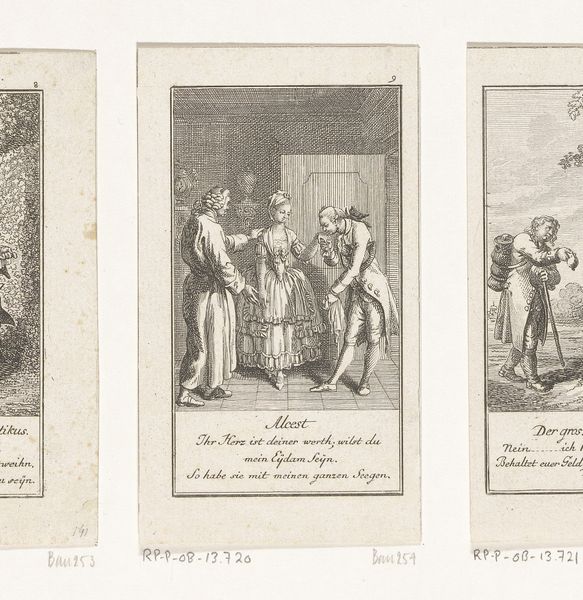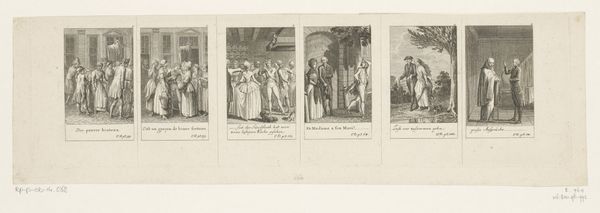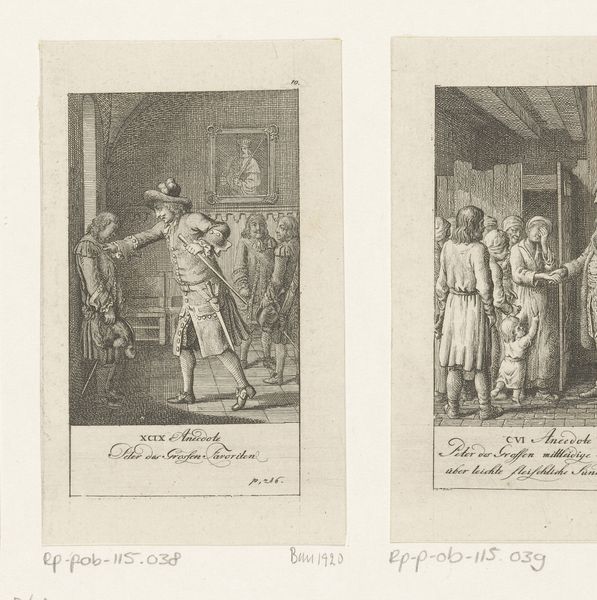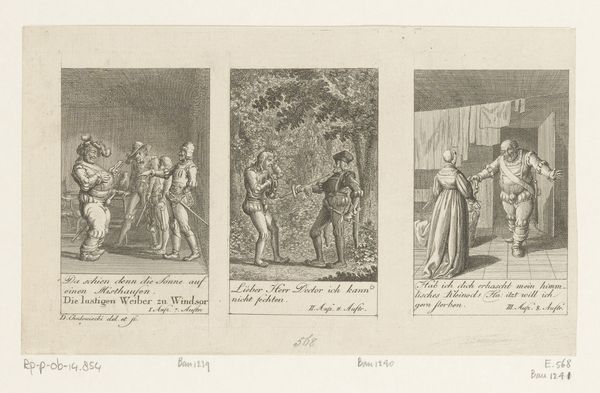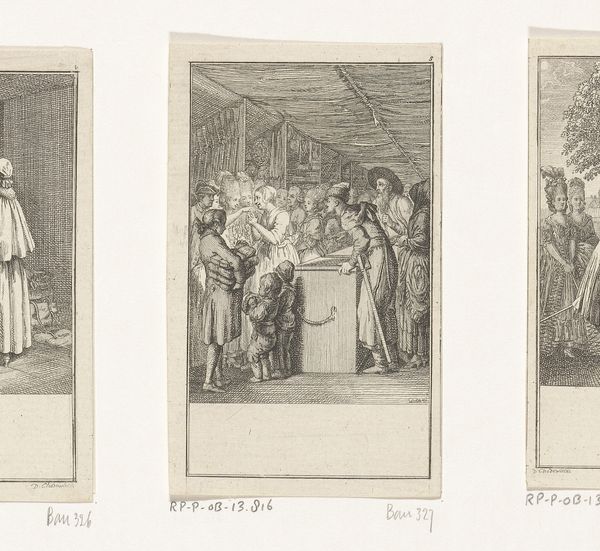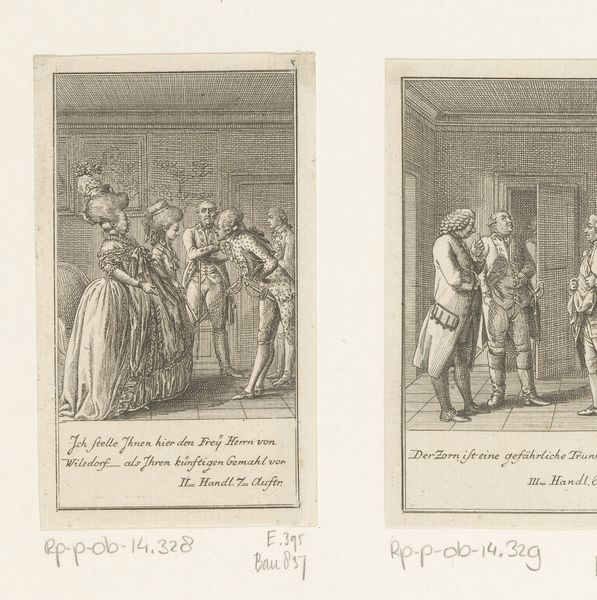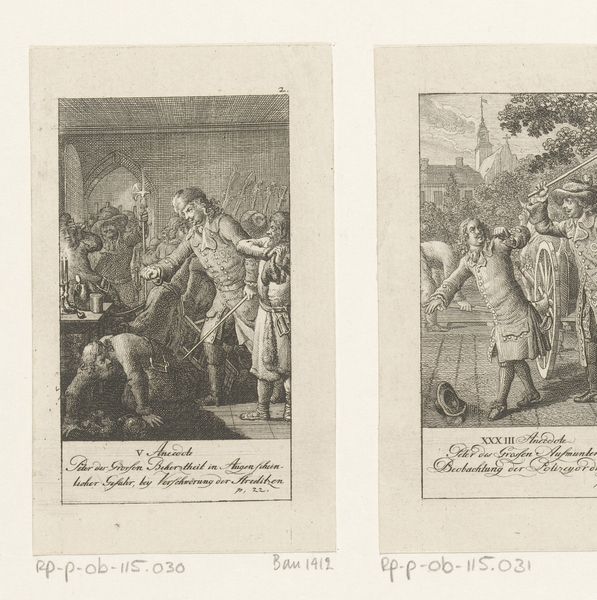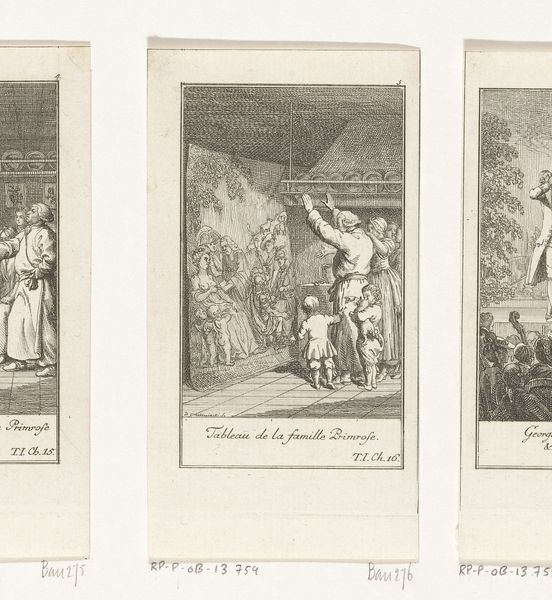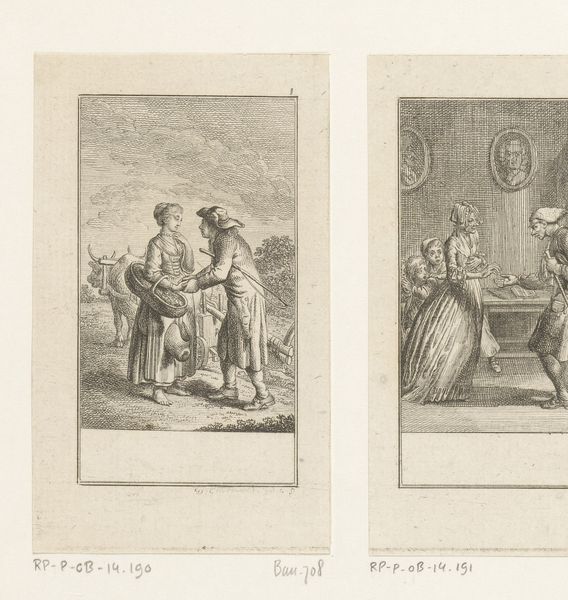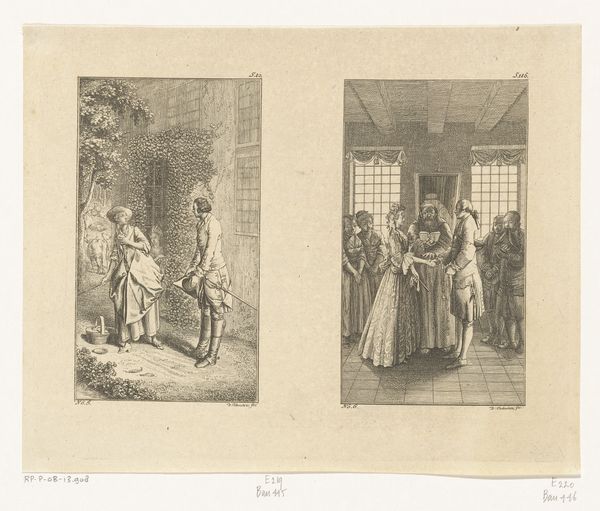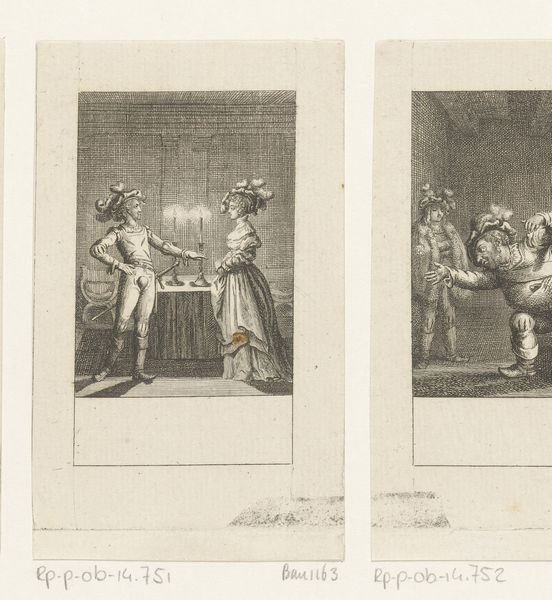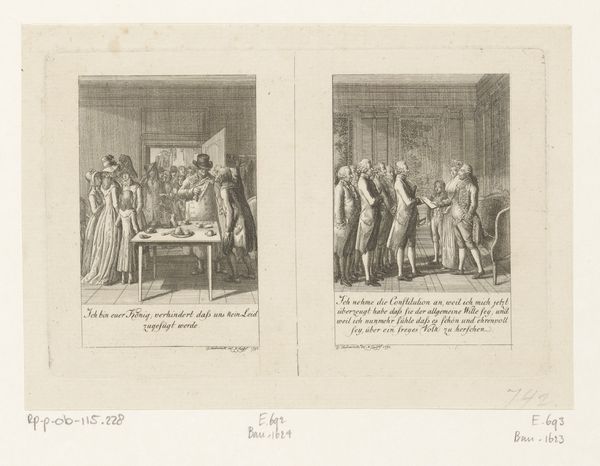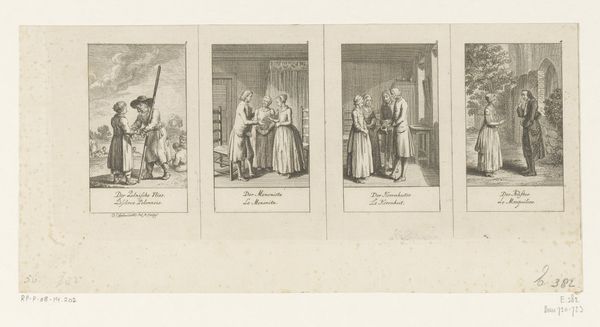
Drie voorstellingen uit William Shakespeares Merry Wives of Windsor 1786
0:00
0:00
danielnikolauschodowiecki
Rijksmuseum
Dimensions: height 112 mm, width 189 mm
Copyright: Rijks Museum: Open Domain
Curator: What a find! This is "Three Scenes from Shakespeare’s Merry Wives of Windsor" by Daniel Nikolaus Chodowiecki, created in 1786. It's an engraving. Three panels depict scenes from the play, and there's text beneath each, in German, I think. Editor: My initial reaction is of looking at a series of symbolic acts. There's such meticulous detail. Look at Falstaff! His ego inflated like a puffed-up balloon about to burst. Is this morality theater, then, with Falstaff embodying vanity or delusion? Curator: That's what grabs you, too? Falstaff's size dominates each panel, almost comically so, against the more subtle interiors and exteriors. Consider how costume transforms Falstaff into something other. He goes from pompous innkeeper, to almost a grotesque clown-like parody of manhood, to something far more pitiable… almost dog-like, really, hounded out into the forest by mischievous faeries. Chodowiecki captured that arc. Editor: The stag antlers crowning Falstaff signal a sort of symbolic castration, a shaming through animal association, don’t you think? We often think of animal symbols of passion like lions, bulls and snakes; deer often relate to humility and a quiet inner life. In this sense, antlers represent inner values placed where ego once thrived. Chodowiecki uses this detail so subtly but also perfectly. It shows a deep understanding of archetypes. Curator: It’s amazing how much narrative detail Chodowiecki packs in – look at the expressions on the women's faces! They range from amusement to outright malicious glee. The overall effect feels… intimate. It is theatre, yes, but portrayed at such close range, inviting us to take part. To experience that public shaming ourselves, too. But you make an important point - the image becomes something more complex and archetypal thanks to those symbol associations. The viewer becomes witness to more than a story, but an elemental truth. Editor: And the act of creating art carries with it echoes of how cultures change—an evolution of thought mirrored and reinforced across each culture where we celebrate theater! It all builds upon older ideas and cultural reference points. So much is transmitted by that image and through the generations—cultural memory itself! Curator: Exactly. He wasn't just illustrating a play; he was interpreting enduring themes, weaving layers of human experiences that stretch far beyond 18th-century England. That's how Chodowiecki makes something special. Editor: An intriguing glimpse into the layers of this scene. Something new to learn from something so seemingly simple.
Comments
No comments
Be the first to comment and join the conversation on the ultimate creative platform.
